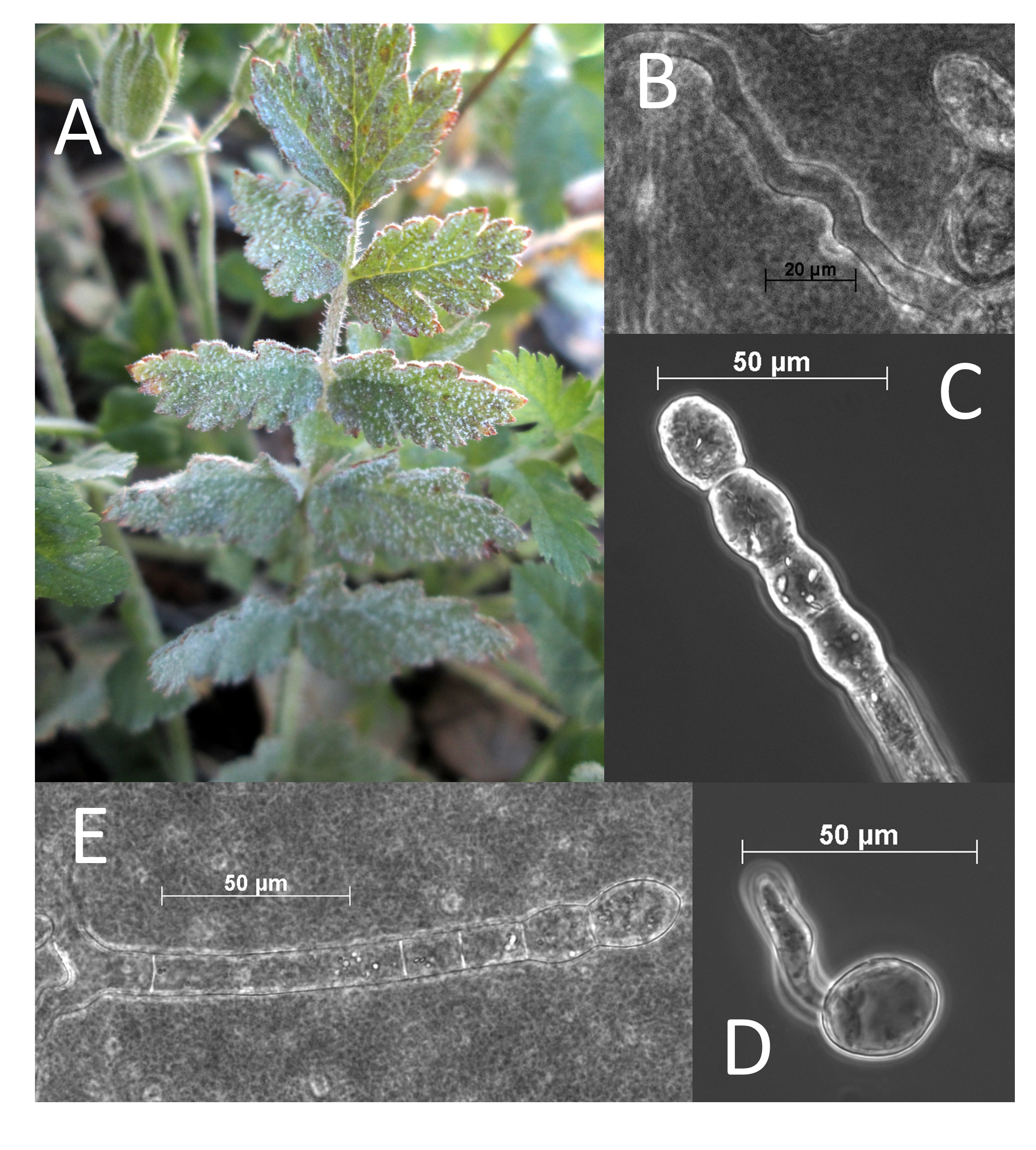First report of powdery mildew of Erodium moschatum caused by Podosphaera cf. erodii in California

Abstract
Erodium moschatum (L.) L’Her., commonly known as whitestem filaree, is a winter annual weed that frequently occurs in many Mediterranean climates. E. moschatum has become naturalized in California since its introduction and grows wild in open, unmanaged sites, where it can serve as food for grazing cattle. In February of 2015, many plants growing along a roadside in Yolo County, California were found to be severely infected with a powdery mildew. Leaves appeared lightly chlorotic with reddened tips, and showed distinct patches of abundant hyphal growth on both sides of the leaves, stem, and fruit. Conidia were hyaline, ellipsoid to barrel-shaped, measured 24 to 29 x 16 to 24 um (n = 50), with an average length/width ratio of 1.6, and had distinct fibrosin bodies. Conidiophores measured 90 to 130 um (n = 15) in length and produced 2 to 5 catenescent conidia. Foot cells were cylindrical and measured 45 to 66 x 6 to 7.5 um (n = 20). Conidia had lateral to subterminal germination and formed a short, unbranched germ tube approximately the same length as the conidia. Hyphal appressoria appeared as slightly nipple-shaped when formed on leaves. No chasmothecia were observed on any of the field-infected tissue. These morphological features were consistent with Podosphaera erodii (Braun and Cook 2012). Leaves from healthy field-grown E. moschatum plants were collected, surface-disinfested with 0.4% sodium hypochlorite, rinsed twice in deionized water, and suspended in 1.5% water agar. Ten leaves were inoculated by gently pressing a diseased leaf onto the surface of the healthy leaves. Ten noninoculated leaves served as a control treatment. Leaves were maintained in a laboratory at 22 +/- 2C. Inoculated leaves developed symptoms and signs after 7 days, whereas the control plants remained symptomless. The fungus present on the inoculated leaves was identical morphologically to that initially observed on diseased plants, fulfilling Koch’s postulates. The pathogenicity test was performed twice. Part of the internal transcribed spacer (ITS) region of rDNA of isolates WDG0221 and WDG0222 were amplified with primers ITS1 and ITS4 (Takamatsu and Kano 2001), and sequenced directly. The resulting 565- and 567-bp sequences were deposited in GenBank (Accession Nos. KR025805 and KR025806). There is currently no type sequence for P. erodii in GenBank. A search of GenBank using the BLAST algorithm revealed a 100% similarity with those of a P. xanthii isolate (AB525918) collected from papaya. However, a comparison with other isolates of P. xanthii collected from papaya (KF111806 and GU358450) suggests that AB525918 is unrelated and may have been mislabeled. Without chasmothecia or a type sequence, it is impossible to definitively identify our isolates. To our knowledge, this is the first report of powdery mildew caused by Podosphaera cf. erodii on whitestem filaree in California. Powdery mildews of E. moschatum caused by Podosphaera species have been reported in Australia, Africa, Europe, and Asia, but not from North America (Farr and Rossman 2015).